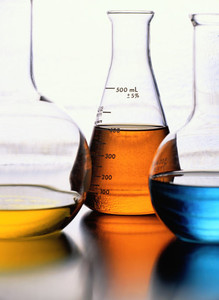What level of discounts will biosimilars need to provide to be competitive? Some believe that biosimilars will need to provide substantial discounts, being priced as low as 25%, and not 75%, of the originator price [1].
How cheap will biosimilars need to be
Biosimilars/Research
|
Posted 05/08/2011
 0
Post your comment
0
Post your comment

With one or two biosimilars on the market
Switching will remain low with only one or two biosimilars on the market. Originator companies will use the rebate card (payers preferring biosimilars will lose their rebate) and match the biosimilar price for most accounts. Biosimilar developers will selectively offer deeper discount to price-sensitive accounts and the two sides will split the market. The originator product will concede 30% of the market, pricing will remain high and everyone will be happy.
With subsequent additional biosimilar entries
Subsequent additional biosimilar entries will need to make substantial discounts—as much as 75–80% versus the originator price—in order to capture market share. The biosimilars will still be profitable on marginal costs. The originator will need to decide whether to compete on price or withdraw to the higher price point and accept loss of 80% market share. Other biosimilars will need to match the lower price.
This situation mirrors that in the generic market for small molecules. When there are only one or two generics in the market, the originator companies will cut their prices to remain competitive. When there are more generics entering the market, the price plummets and the originator companies withdraw to a high price–low market share position.
Summary
In Europe, the first wave of biosimilars adoption is as expected, delays are caused by country or product specific issues as well as the new concept of biosimilars.
In the US, biosimilars can justify their place in savings to commercial payers after 2012.
To capture adoption in a crowded market, biosimilar developers will need to cut price substantially at 20–25% of the pre-biosimilar innovator price.
Dr Ronny Gals’ view is that originator companies are underestimating the risk that biosimilars pose and that biosimilar developers are overestimating the price [1].
Editor’s comment
Only the future will tell whether the market can support many biosimilar producers, as is the case for generics, or whether it will be limited to 1-2 players for each indication as many believe.
Please feel free to share your thoughts via email to editorial@gabionline.net or in the comments section below. What do you think the future holds for biosimilars? Do you think that biosimilars will have to make substantial savings—up to 80% of the originator price? Or do you think the market will be limited to 1-2 biosimilars in each indication?
Related articles
Timing of the launch of biosimilars in Europe
Challenges ahead for biosimilar development
Reference
1. Gal R. Biosimilar development is progressing, but bigger challenges are ahead. 9th EGA International Symposium on Biosimilar Medicines; 2011 Apr 14; London, UK.
News
FDA approves six denosumab biosimilars
EMA recommends approval for four biosimilars targeting three therapies
General
Samsung Bioepis wins Pyzchiva case; Regeneron patent rulings threaten foreign biosimilars
Chinese biosimilars go global: growth, partnerships, and challenges
What is the future for the US biosimilar interchangeability designation

Biosimilars/Research Posted 05/06/2025
Biosimilar clinical efficacy studies: are they still necessary?

Biosimilars/Research Posted 27/05/2025
The best selling biotechnology drugs of 2008: the next biosimilars targets








Post your comment